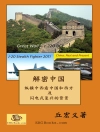During the spring of 1938, a flood of Chinese refugees displaced by the Anti-Japanese War (1937-1945) converged on the central Yangzi valley tricity complex of Wuhan. For ten remarkable months, in a highly charged atmosphere of carnage, heroism, and desperation, Wuhan held out against the Japanese in what would become a turning point in the war—and one that attracted international attention. Stephen Mac Kinnon for the first time tells the full story of Wuhan’s defense and fall, and how the siege’s aftermath led to new directions in the history of modern Chinese culture, society, and politics.
Mục lục
List of Illustrations
List of Tables
Acknowledgments
Prologue
Chapter 1. Wuhan before the War
Chapter 2. Defending Central China, 1938: Military Leadership and Strategy
Chapter 3. The Battle for Xuzhou and the Defense of Wuhan
Chapter 4. Wuhan’s Refugee Crisis
Chapter 5. Culture and the Press
Chapter 6. Mobilizing Youth
Chapter 7. Romantic Hankou: The International Dimension
Conclusion
Appendix: Wartime Wuhan: A Chronology
Notes
Glossary
Giới thiệu về tác giả
Stephen R. Mac Kinnon is Professor of History at Arizona State University. He is author of Power and Politics in Late Imperial China: Yuan Shi-Kai in Beijing and Tianhun, 1901-1908, and coauthor of China Reporting: An Oral History of American Journalism in the 1930s and 1940s and Agnes Smedley: The Life and Times of an American Radical, all published by UC Press. He is the editor, with Diana Lary and Ezra Vogel, of China at War: Regions of China, 1937-45, among other books.












